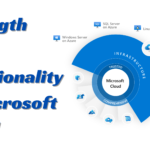Which Microsoft licensing model is right for your business?
In today’s digital era, businesses of all sizes rely heavily on software to drive their operations. Microsoft, as one of the leading software providers globally, offers a plethora of applications and services tailored for various business needs. However, to access and utilize these tools, businesses need the right licensing agreements in place. The Microsoft licensing landscape can be a complex web, with various models designed to cater to different types of organizations and usage scenarios. Navigating this intricate domain becomes even more critical, as the wrong choice can not only lead to unnecessary expenditures but also potential compliance issues. This article aims to demystify Microsoft’s licensing models, helping decision-makers identify which option aligns best with their company’s size, goals, and operational needs. Whether you’re a burgeoning startup or a well-established enterprise, understanding the nuances of Microsoft’s licensing offerings can be a game-changer for your IT budget and software management strategy.
Which Microsoft licensing model is right for your business?
The basics of Microsoft licensing
Different Licensing Models Offered by Microsoft encompass various business needs and sizes. The Open License is a flexible and cost-effective solution, best suited for small to mid-sized organizations. Its benefits include simplicity and potential volume discounts, although it may not be optimal for very large businesses. On the other hand, the Enterprise Agreement is designed for medium to large-sized businesses, offering attractive long-term pricing but potentially requiring more significant initial commitments.
For organizations leaning towards cloud solutions, the Microsoft Cloud Agreement provides a scalable option with robust features, making it suitable for businesses of various sizes; however, it might require careful management to avoid unforeseen costs. Lastly, the Server and Cloud Enrollment is tailored for highly virtualized enterprises, offering benefits like optimized pricing for cloud services and a unified licensing agreement. While this model offers significant advantages in terms of cost and flexibility, it’s geared towards specific business needs and may not be suitable for every organization.
Different licensing models offered by Microsoft
When choosing a Microsoft licensing model, several factors come into play. The size of your business, measured by the number of employees or users, can largely influence the optimal choice. Equally vital is your projected growth, as anticipated expansions can reshape your licensing requirements. Your organization’s specific software preferences can also direct you towards certain licenses better aligned with particular products or suites. Moreover, it’s essential to factor in budgetary constraints, as there are noticeable cost variations between models, each carrying its long-term financial implications. Ultimately, ensuring flexibility and scalability in your chosen model is crucial, guaranteeing the ease of adapting to changing circumstances, whether it’s adding new licenses or scaling down as required.
Factors to consider when choosing a licensing model
When selecting a licensing model, businesses must weigh various considerations. The size of the organization and its projected growth can dictate specific licensing needs. It’s also crucial to pinpoint specific software requirements, as certain licenses cater more effectively to particular products. Budget constraints can further narrow down choices, as each model has distinct cost implications. Finally, flexibility and scalability remain paramount, ensuring the ease of adjusting to evolving organizational demands.


















